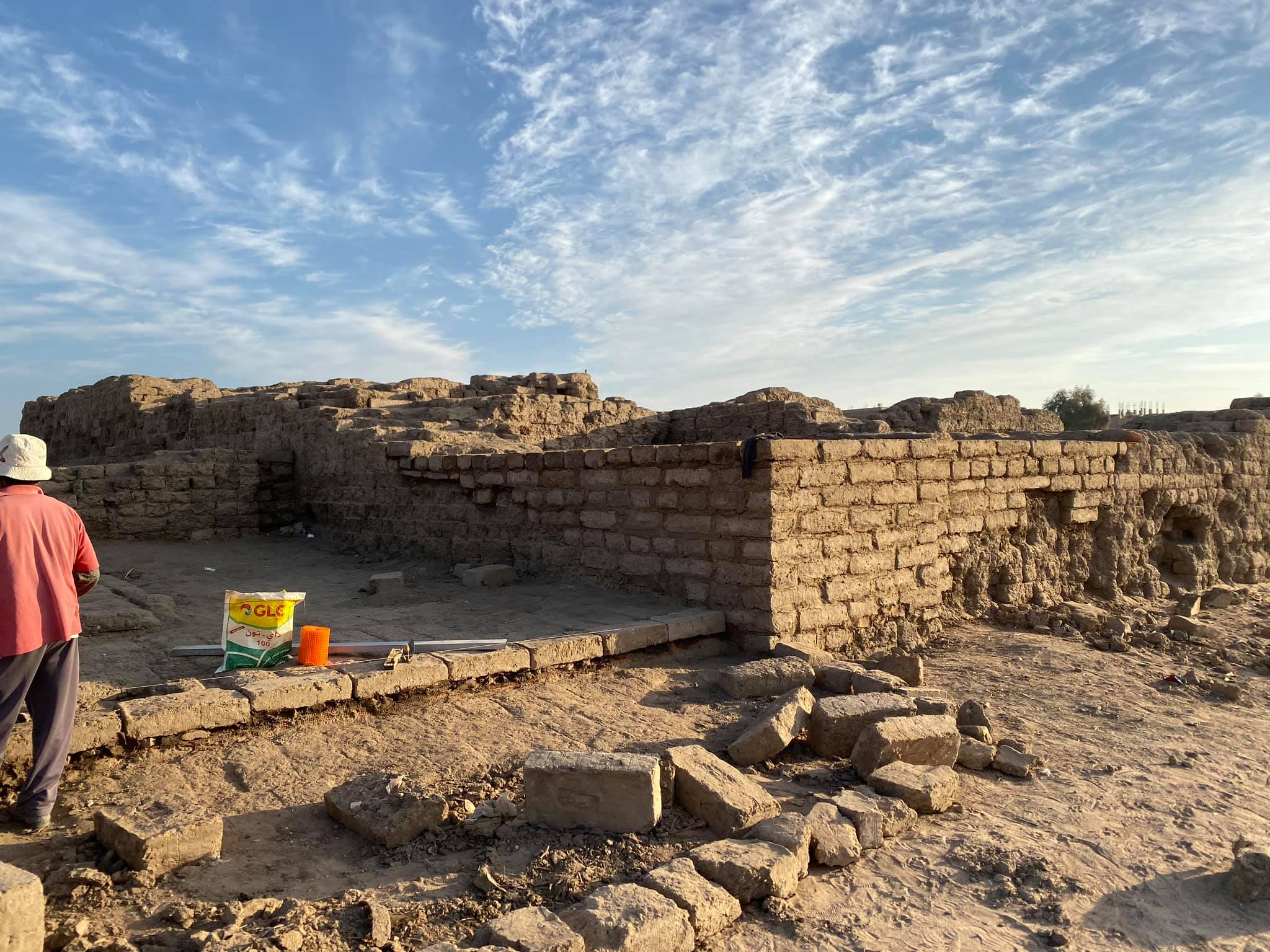- Era17th Dynasty
- Project DirectorPeter Lacovara
- LocationUpper Egypt
- AffiliationThe Ancient Egyptian Heritage and Archaeology Fund
- Project SponsorAmerican University in Cairo (AUC)Archaeological Institute of America & Antiquities Endowment Fund
- Project Dates2017-Present
The current principal project of the Ancient Egyptian Heritage and Archaeology Fund is the site of Deir el-Ballas located about 30 kilometers north of Western Thebes. The site was of pivotal importance in Egyptian history as the forward capital of the Theban kings during the Hyksos expulsion and also is one of the few substantially excavated pharaonic town sites. Today however, the site is at extreme risk from both looting and even more importantly from the uncontrolled expansion of the adjacent modern town of Deir el-Gharbi. Like many archaeological sites in Egypt, Deir el-Ballas is located on the desert edge of the Nile floodplain, and population pressure resulting in the urban expansion, transportation, manufacturing and agricultural infrastructure makes this zone particularly vulnerable as the need for space grows. The situation at Deir el-Ballas is particularly dire as the construction of the Western Desert road from Aswan to Cairo has now squeezed the site between the old river road and the new highway.
Deir el-Ballas was originally excavated by the Phoebe A. Hearst Expedition of the University of California under the direction of George A. Reisner in the years l900 to 1901. During the season’s work he uncovered the remains of a large royal palace, called the North Palace and a massive watchtower at the Theban end of the site known as the “South Palace,” along with a series of cemeteries, villas, and a workmen’s settlement. Unfortunately, the excavations were never published and the field notes were so brief that any in depth study of the excavation was impossible. To understand the site better four seasons of survey and clearance were undertaken in l980, l983, 1984 and 1986 under the sponsorship of the American Research Center and the Museum of Fine Arts, Boston. Unfortunately, since that time many features of the site have been damaged or destroyed. With that aim of protecting and preserving this important site, the Ancient Egyptian Heritage and Archaeology Fund in concert with the American University in Cairo has begun a program of work with the Antiquities Inspectorate in Qena to define those areas most threatened and devise strategies to protect them from further encroachment and undertake the stabilization, protection and preservation of the standing monuments.
Restoration work being done on the North Palace – March 2020.Photo: Peter Lacovara.
At the “South Palace” looters digging holes at the base of the eastern façade of the platform had collapsed significant portions of the outer wall and threatened the integrity of the entire structure. We have begun to replace the tumbled brick with modern unbaked mudbrick of the same size, stamped with the logo of the American University In Cairo to indicate modern interventions and to secure the façade to prevent further deterioration.
Reconstruction of the southern enclosure wall of the North Palace
At the North Palace we have begun to clean the casemate foundations emptied by Reisner with clean sand to prevent collapse, deposition of trash and for safety concerns. We would rebuild losses in the palace with modern unbaked mudbrick of the same size, stamped and bounded by geotextile to indicate modern interventions to secure the casemates and surviving walls of the Palace. We also have begun to define and delimit the archaeological area with brick and/or fencing the North Palace to prevent further encroachment of the modern town and associated cemetery, including re-building the enclosure walls of the Palace. In addition, we have also been recording the archaeological remains, both excavated by Reisner and remaining un-excavated, across the site and are developing ways to protect and preserve them. Team members have included: Piet Collet, Nicholas R Brown, Tom Hardwick Victoria Jensen, Bettina Bader, Amr Shahat, Tony Crosby, Salima Ikram, Nicholas Warner and Hassaan Mohamed Ali.
The work being conducted at Deir el-Ballas is also being undertaken with a project funded by the Shelby White – Leon Levy Fund for Archaeological Publications to publish the original work of Reisner and the Hearst Expedition at the site. Our fieldwork has been funded by the American Research Center in Egypt’s Antiquities Endowment Fund as well as a Site Preservation Grant from the American Institute of Archaeology and contributions to the Ancient Egyptian Heritage and Archaeology Fund.
Other projects we have undertaken include a series of oral history/video recordings of American Egyptologists and a publication program which includes a previously unpublished manual of Egyptian Archaeology written by George Andrew Reisner along with an English translation by Ziff Jonker of Valdemar Schmidt’s Sarkofager, Mumiekister og Mumiehylstre i det gamle Aegypten, the classic work on ancient Egyptian funerary art, at present available only in Danish.

